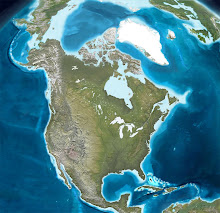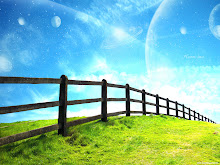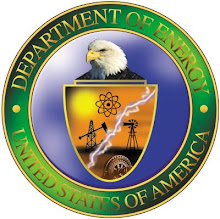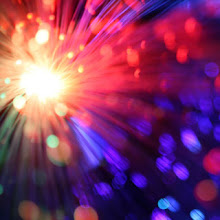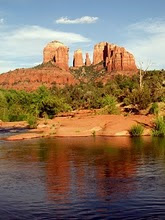Friday, August 15, 2014
Heavenly views: Sedona, Arizona, joins ‘Dark Sky’ towns
By
Steve Hammons
Sedona,
Arizona, just got more beautiful, if that is possible. Sedona is home to the
world-famous “red-rock country” of magnificent stone formations and welcoming
red earth located in the high desert of central Arizona.
On
Monday, Aug. 4, the International Dark-Sky Association (IDA) notified the city
of Sedona and Keep Sedona Beautiful that Sedona had earned the rare designation
as an International Dark Sky Community. There are only six communities in the
U.S. who have achieved this designation.
Now,
residents and visitors can enjoy the fantastic red-rock beauty during the day
and appreciate to a greater degree the nighttime views of the stars and
planets, and behold other sights as well.
According
to an Aug. 6 news report in the Phoenix-based Arizona Republic newspaper, IDA
representative John Barentine said the criteria for earning the Dark Sky
Community status are challenging but do-able for many communities.
"We
keep the bar set pretty high. That's the reason there aren't thousands of
them," Barentine was quoted as saying.
But communities can start looking at the issue of nighttime
light pollution and start making changes, he told the Republic. "We think
that the solutions are simple, and that first people just have know that
there's a problem to address," Barentine said. He added that improving the
view of the night skies can be achieved by communities of many sizes.
INTELLIGENT LIGHTING
The Arizona Daily Sun newspaper in Flagstaff, Arizona, noted
in an Aug. 7 article that the eight communities worldwide that have achieved the
IDA’s Dark Sky Community rating are Flagstaff, Borrego Springs, Calif.; Homer
Glenn, Ill.; Beverly Shores, Ind.; Dripping Springs, Texas; Isle of Coll in
Scotland; and Isle of Sark in the Channel Islands, UK, and now, Sedona.
The
IDA website points out that, “Once a source of wonder – and one half of the entire
planet’s natural environment – the star-filled nights of just a few years
ago are vanishing in a yellow haze.”
“Human-produced
light pollution not only mars our view of the stars; poor lighting threatens
astronomy, disrupts ecosystems, affects human circadian rhythms, and wastes
energy to the tune of $2.2 billion per year in the U.S. alone,” the IDA claims.
The Daily Sun article also noted that Flagstaff will be the
site of the Dark Skies and Emerging Technology Conference Aug. 18-20. The event
“will bring together Southwest dark-sky advocates, municipal and business
officials, the outdoor lighting industry and public land managers,” the Daily
Sun reported.
“The goals include identifying new lighting technology and
evaluating its cost and safety, along with developing a framework for
collective dark skies protection across the Southwest,” the article explained.
Night lighting in communities, towns and cities can be used
wisely or unwisely, according to the IDA. Their website points out that, “We
promote one simple idea: light what you need, when you need it. We know some
light at night is necessary for safety and recreation.”
“We work with manufacturers, planners, legislators, and
citizens to provide energy-efficient options that direct the light where you
want it to go, not uselessly up into the sky.”
"IDA is the recognized authority on light pollution,"
according to their website. "Founded in 1988, IDA is the first
organization to call attention to the hazards of light pollution, and in 24
years of operation our accomplishments have been tremendous.”
“Our approach of public awareness and extensive partnerships
is improving nighttime lighting on six continents. IDA acts on numerous issues
to create a platform as expansive as the sky itself.”
Sedona’s recent accomplishment in being designated an International
Dark Sky Community may have benefits beyond those noted by Sedona community
leaders, the IDA and those working to reduce light pollution in the U.S. and
worldwide.
MYSTERIOUS CONNECTIONS
The moon, stars, planets, meteors, comets and amazing views of our Milky Way galaxy may not be the only fascinating things in
Sedona’s night skies. The area has long been known for interesting and unusual
energy phenomena emanating from the red earth and red rock as well as
unidentified lights and objects in the region’s skies.
And there could be a connection.
Research has indicated that the Sedona area rests on unique
geological formations that include high levels of iron oxide in the
region’s sandstone and limestone, combined with volcanic basalt embedded with
high quantities of quartz. This combination is believed to affect Earth's natural magnetic
energy in the Sedona region. Quartz crystals themselves emit magnetic forces as
well.
Additionally, ancient volcanic activity in the Sedona region
has created tunnel-like “plugs,” now filled with a different mineral composition,
which “tend to produce intense, somewhat ‘circular’ magnetic anomalies,”
according to the U.S. Geological Survey (USGS).
In Sedona, "Geologic structures often produce small
magnetic fields that 'distort' the main magnetic field of the Earth," according
to the USGS.
These geological and magnetic conditions are believed by
some people to be the source of the so-called energy “vortexes” in Sedona.
Visitors from around the U.S. and around the world come to Sedona to explore and
experience these alleged unusual forces which are believed by some to affect
human consciousness.
The vortexes may be the outflow and inflow of Earth's natural magnetic
energy, changed by the iron oxide and quartz in the region, then emerging through the volcanic
plugs and returning to the ground nearby. That's the view of some researchers like electrical engineer Benjamin Lonetree. He has examined Sedona’s geology and its
apparent effect on human consciousness.
Could the factors affecting Sedona’s magnetic fields also
have traits similar to a natural transistor, transmitter or receiver? Lonetree
speculates that this is possible.
If that is the case, other unusual or anomalous sightings in
Sedona’s skies could be connected in some way.
One thing seems certain – Sedona residents and visitors
looking up into the night sky will have an excellent view of whatever is above,
from the glorious cosmos to interesting anomalous lights and objects that we
are learning more about.
What better place for such a connection than planet Earth’s
newest International Dark Sky Community?






























